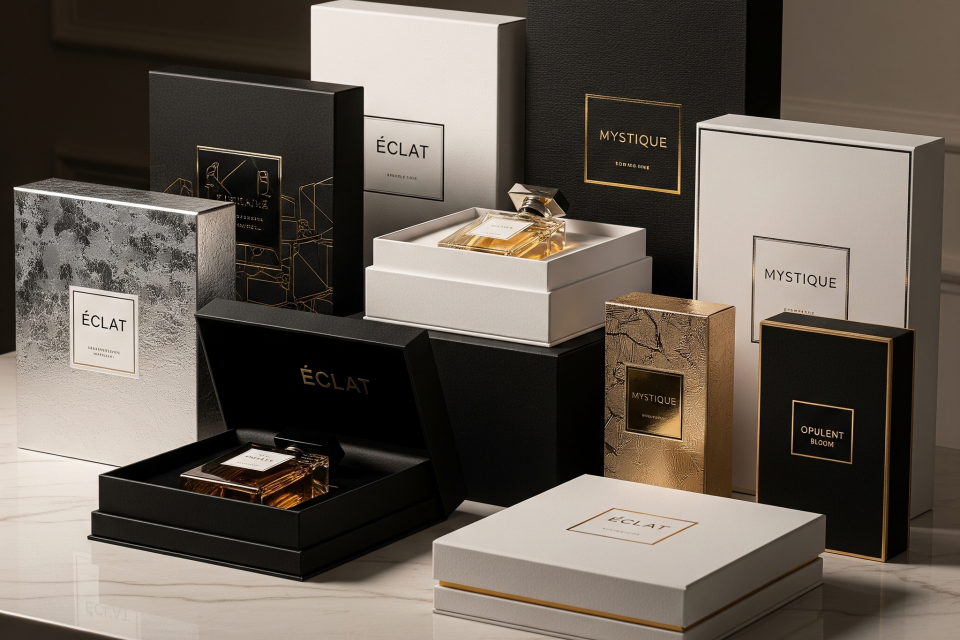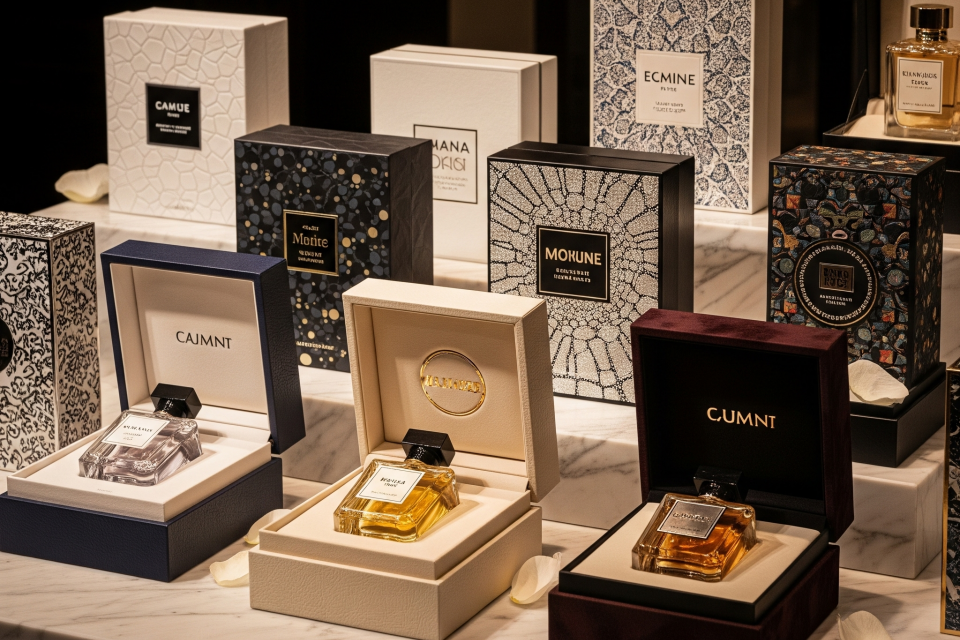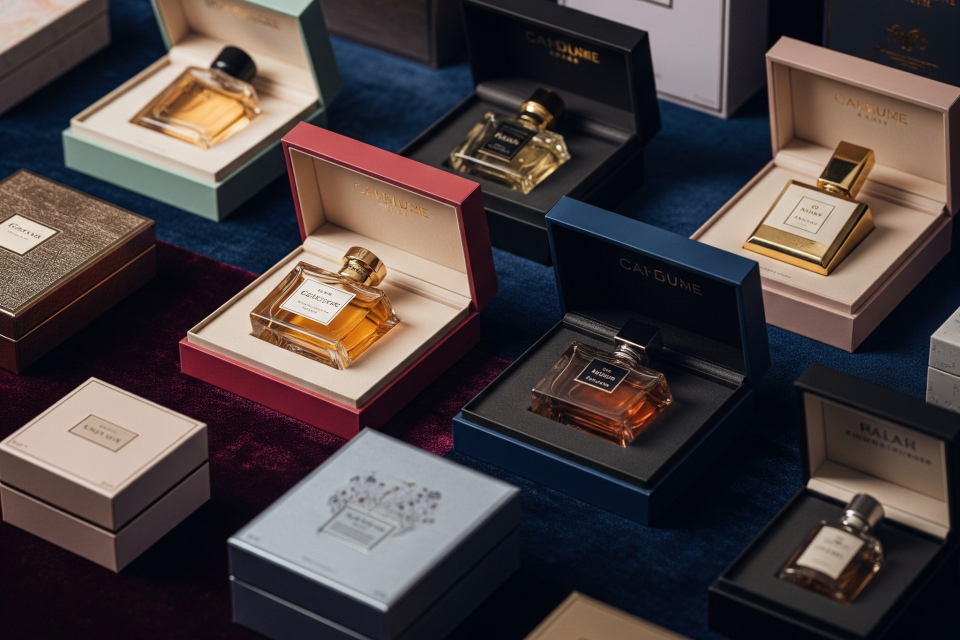Trends in Luxury Perfume Box Design
Trends in Luxury Perfume Box Design
Summary
Trends in Luxury Perfume Box Design examines the evolving aesthetics and innovations in packaging within the luxury fragrance industry. This topic is notable as luxury perfume packaging serves not only to protect and present the fragrance but also to convey brand identity, craftsmanship, and values, such as sustainability. As consumers increasingly seek products that align with their ethical preferences, the design of perfume boxes has become a critical aspect of marketing and brand differentiation in a competitive market.
The historical trajectory of luxury perfume box design reflects broader cultural shifts and technological advancements, from ancient storage vessels to contemporary artful creations. Key trends include the rise of minimalism, which emphasizes simplicity and quality materials, and a growing commitment to sustainability, with many brands opting for eco-friendly and refillable packaging options to meet consumer demands for environmentally responsible products. Additionally, the personalization of packaging through limited editions and unique designs caters to a desire for individuality among consumers, enhancing their emotional connection to the fragrance.
Controversies within the industry often revolve around balancing luxury with sustainable practices. As consumer values shift, luxury brands are challenged to maintain the opulence typically associated with high-end products while integrating eco-friendly materials and practices. This tension underscores a significant shift in the market dynamics, where brands must innovate their packaging solutions to appeal to a more conscious consumer base, which increasingly prioritizes sustainability in their purchasing decisions.
In conclusion, trends in luxury perfume box design encapsulate a dynamic interplay between aesthetic appeal, brand identity, and sustainability, shaping not only consumer experiences but also the future direction of the fragrance market. As the industry adapts to changing consumer expectations, the design of luxury perfume packaging continues to evolve, blending artistry with responsibility to enhance brand value and consumer engagement.

Historical Overview
The evolution of luxury perfume box design is intrinsically linked to the broader history of fragrance packaging, which has undergone significant transformations throughout the ages. The journey began in ancient civilizations, where perfumes were stored in simple alabaster or ceramic vessels. These rudimentary containers served a critical purpose of protecting aromatic oils derived from flowers and spices, but they lacked elaborate decoration or artistic design.
The Classical and Middle Ages
With advancements in glassmaking techniques during the Roman Empire, perfume bottles began to transition from clay and stone to more delicate glass forms. The introduction of glassblowing allowed artisans to create intricate and lightweight bottles that emphasized aesthetic appeal over mere functionality. In the Middle Ages, the design of perfume containers became more ornate, reflecting the growing importance of fragrance in social and cultural practices.
The Victorian Era
The late 19th century marked a pivotal period with the introduction of the atomizer, revolutionizing how fragrances were applied. This era was characterized by highly decorative glass bottles adorned with floral motifs and intricate patterns, often enhanced with metal fittings. While still considered luxury items, these designs became more accessible to the upper classes, elevating the importance of perfume packaging as a symbol of sophistication.
Art Nouveau and Art Deco Movements
The early 20th century saw the rise of the Art Nouveau and Art Deco movements, which significantly influenced perfume bottle design. Renowned artists, such as René Lalique, produced masterpieces that integrated artistic vision with fragrance concepts. These bottles featured high-quality glass, often frosted or colored, and were marked by flowing lines, geometric shapes, and bold symmetry. This period established a strong brand identity through distinctive bottle shapes that became synonymous with luxury fragrances, elevating perfume packaging to an art form.
Modern Era
As the 20th century progressed, perfume packaging continued to evolve, reflecting changing social dynamics and consumer culture. The demand for branded packaging grew, leading to an explosion of design creativity and innovation. Luxury brands began experimenting with new materials, minimalist designs, and sustainable practices, enhancing the overall consumer experience while maintaining the artistic integrity of their products. Today, the narrative of perfume packaging is not only about protecting the fragrance but also about expressing brand identity, luxury, and a commitment to sustainability.
Key Trends in Luxury Perfume Box Design
Evolution of Design Aesthetics
The landscape of luxury perfume box design has evolved significantly, blending timeless elegance with modern innovations. Minimalism has emerged as a dominant trend, characterized by clean lines and high-quality materials. This approach not only emphasizes the product but also conveys sophistication and luxury in a discreet manner. Brands like Byredo exemplify this minimalist trend with simple yet striking packaging that appeals to discerning consumers seeking understated elegance.
Sustainable Practices
Sustainability is at the forefront of contemporary perfume packaging design. The shift towards eco-friendly materials is reshaping the industry, with brands increasingly utilizing recycled and biodegradable materials, such as bagasse fiber and corn-derived bioplastics. Refillable perfume systems are also gaining traction, promoting a circular economy by encouraging consumers to reuse containers, which can significantly reduce waste. Research indicates that the market for refillable perfumes is projected to grow, highlighting a consumer preference for sustainable practices.
Personalization and Limited Editions
Personalization in packaging design has become increasingly important, with limited edition and customized perfume bottles offering unique value to consumers. These exclusive designs not only enhance the consumer experience but also cater to collectors and those seeking one-of-a-kind products, transforming fragrance into an art form. Such trends reflect a broader desire for individuality and uniqueness in luxury goods.
Innovative Packaging Features
The incorporation of innovative features is another trend in luxury perfume packaging. Brands are exploring smart packaging technologies that integrate digital experiences through QR codes or augmented reality, allowing consumers to connect with the product on a deeper level. Furthermore, functional design elements like airless pumps and ergonomic shapes are being introduced to improve user experience while maintaining the luxury appeal of the product.
Market Dynamics
The luxury perfume packaging market is experiencing growth, driven by the increasing consumer demand for premium and sustainable packaging solutions. The glass perfume bottle market alone is projected to grow from $2.5 billion in 2025 to $3.7 billion by 2033. This growth is indicative of a larger trend where consumers prioritize sustainability, with over half considering it a crucial factor in their purchasing decisions for luxury fragrances.
Through these evolving trends, luxury perfume box design continues to merge aesthetic appeal with sustainability, personalization, and innovative functionality, thereby enhancing brand identity and consumer engagement in a competitive market.

Design Elements
Luxury Finishes
Luxury finishes play a crucial role in enhancing the appeal and value of perfume packaging. Techniques such as embossing, debossing, foiling, spot UV, and soft-touch coating are commonly used to create a high-end aesthetic. Embossing and debossing add depth and texture by creating raised or recessed effects, while foiling applies a thin metallic or holographic film to convey sophistication. Soft-touch coating provides a velvety texture, engaging consumers' tactile senses and elevating the overall unboxing experience.
Color Combinations
Strategic color combinations are essential for creating striking visual impacts in luxury packaging. Deep, rich tones contrasted with lighter shades can draw attention and resonate with target markets, enhancing the overall packaging experience. The careful selection of colors helps to communicate the brand's essence and creates a cohesive visual identity.
Typography
Typography in luxury packaging serves as an art form that reflects the brand's identity. Clean and sophisticated typefaces enhance readability while adding elegance. Avoiding overly ornate fonts ensures that the brand message remains clear. The placement and spacing of typography contribute to the overall balance of the design, emphasizing the luxury experience.
Coherent Design Language
A consistent design language is vital for ensuring that all elements of packaging, including colors, materials, typography, and layout, work harmoniously. This coherence communicates the brand's message effectively and allows the packaging to maintain a timeless quality, adaptable to various contexts without losing its essence. Establishing a strong design language fosters brand loyalty and creates lasting impressions among consumers.
Innovative Features
Incorporating innovative features into luxury packaging can enhance consumer experiences. The use of advanced technologies, such as interactive elements and augmented reality, allows brands to push creative boundaries. Quality control is paramount to ensure that each piece meets high standards, with small details like satin ribbons or metallic foil accents adding an exclusive touch.
Exclusive Touches
Creating a sense of exclusivity in luxury packaging can be achieved through unique features, such as limited edition designs or personalized engravings. These exclusive elements elevate perceived value and generate excitement around the product. Providing distinctive and rare features enhances consumer desire, making each purchase feel special.
Materials and Sustainability
The choice of materials significantly impacts luxury packaging. High-quality options like glass, metal, and premium paper are favored for their luxurious appeal. Additionally, advancements in sustainable materials, such as biodegradable components and recycled paper, are becoming more prevalent, aligning with eco-conscious trends in the industry. Sustainable packaging not only minimizes environmental impact but also maintains an upmarket appearance, enhancing brand prestige.

Case Studies
Iconic Packaging Designs
Certain perfume packaging designs have transcended their time and become enduring symbols of beauty and luxury. For instance, the timeless elegance of Chanel No. 5's square glass bottle has established a benchmark in the industry, symbolizing sophistication and class. Similarly, the sculptural allure of Thierry Mugler's Angel star bottle has captivated fragrance enthusiasts and collectors, showcasing how innovative bottle shapes can become synonymous with a brand's identity.
Luxury Brand Strategies
Luxury brands such as Chanel and The Estee Lauder Companies employ high-quality materials and distinctive exterior finishes to create a sense of sophistication and exclusivity. Market research indicates that consumers are willing to pay a premium for products encased in luxury packaging, which enhances brand perception and elevates the perceived value of the fragrances. This approach underscores the importance of material selection and packaging design in reinforcing a brand's identity and appealing to consumer desires for elegance and exclusivity.
Minimalism vs. Sophistication
The fragrance industry has witnessed a shift in consumer tastes, with modern consumers increasingly gravitating towards minimalist designs that allow the fragrance to take center stage. These designs often convey simplicity and elegance while still resonating with the brand's identity. Conversely, luxury brands continue to leverage classic and sophisticated designs, reflecting heritage and exclusivity. This blend of modernity and tradition provides a unique touch that aligns with individual consumer styles, showcasing how packaging can reflect broader market trends.
Limited Editions and Collaborations
Limited edition packaging often captures consumer interest by providing unique and collectible designs. Collaborations between perfume brands and renowned artists or designers have resulted in packaging that is not only functional but also serves as a piece of art. These initiatives elevate the overall consumer experience and can significantly boost a brand's visibility and desirability in the marketplace. The combination of artistic design and exclusivity reinforces the emotional connection consumers have with their fragrance choices.
Sustainable Packaging Innovations
As consumer values shift towards sustainability, many luxury brands are incorporating eco-friendly materials into their packaging designs. Lightweight materials, refillable formats, and reduced plastic usage have become standards in the industry, driven by consumer demand for environmentally responsible products. Brands like Verescence and Ere Perez are leading the charge in sustainable packaging, demonstrating that luxury can coexist with ethical considerations. This trend highlights the evolving landscape of luxury perfume packaging, where aesthetic appeal must align with modern consumer values.
Market Impact
The luxury perfume market is experiencing significant transformation driven by various factors, including consumer preferences, competitive dynamics, and sustainability considerations. As of 2023, the global fragrance market is projected to reach $30.61 billion, with an anticipated compound annual growth rate of 5.4% from 2024 to 2030. This growth is largely fueled by increasing demand for processed foods, personal care, and beauty products, particularly in emerging economies such as India and China, where rising disposable incomes and population growth are reshaping consumer behavior.
Consumer Preferences and Sustainability
A key trend in the luxury perfume market is the shift towards sustainable practices, primarily influenced by Millennials and Gen Z consumers, who are becoming increasingly vocal about environmental issues. A McKinsey survey revealed that 67% of these consumers consider sustainability when making luxury purchases. Consequently, luxury brands are innovating their packaging to incorporate eco-friendly materials and practices. A study highlighted in the Journal of Industrial Ecology found that 72% of consumers prefer brands that adhere to environmentally conscious guidelines, emphasizing the importance of sustainability in influencing purchasing decisions.
Competitive Landscape
The competitive landscape of the fragrance packaging market is dominated by established players such as Verescence France SASU, Saverglass, and Gerresheimer AG, among others. These companies are facing competition from emerging direct-to-consumer brands that leverage digital platforms for market entry, emphasizing innovation and sustainability to cater to shifting consumer preferences. The international perfume market is characterized by a high concentration level, with the top 17 countries accounting for nearly all exported perfume value, underscoring the significant role these nations play in shaping market dynamics.
Trends in Packaging Design
The design of luxury perfume packaging has evolved to reflect brand identity and consumer expectations. Brands are increasingly focused on personalization and customization, creating exclusive packaging experiences that foster emotional connections with consumers. Additionally, packaging design is seen as an effective tool for constructing a positive first impression in a competitive marketplace, where visual appeal and quality can significantly impact consumer choices. The integration of practical features, such as easy-to-open caps and travel-friendly designs, enhances user experience and satisfaction, further influencing repeat purchases.
Challenges and Future Directions
The luxury perfume industry is currently navigating a complex landscape shaped by evolving consumer expectations and environmental considerations. As sustainability emerges as a pivotal concern, brands face the challenge of balancing luxurious aesthetics with eco-friendly practices. The shift from traditional excess to mindful consumption necessitates innovative approaches to packaging design that maintain allure while reducing environmental impact.
Balancing Luxury and Sustainability
Historically, luxury has been associated with opulence, which often translated into extravagant packaging. However, as consumers increasingly prioritize sustainability, luxury brands must rethink this paradigm. Companies are now tasked with integrating sustainable materials without sacrificing the quality and sophistication that characterize luxury products. This challenge involves a re-evaluation of sourcing practices and the exploration of alternative materials that align with both luxury standards and environmental ethics.
Innovation in Packaging Design
The future of luxury perfume packaging lies in innovation. Brands are encouraged to adopt maximalist design trends, which embrace bold colors and unique patterns, while still ensuring that these designs convey a message of sustainability. Additionally, packaging must not only be visually appealing but also functional, offering protection and usability for consumers. Companies like mPackting are leading the charge by creating eco-designed solutions that reflect a commitment to both refinement and responsibility.
Meeting Consumer Expectations
To remain competitive, luxury brands must also meet the rising expectations of a more eco-conscious consumer base. This involves not just the adoption of sustainable packaging materials, but also transparent storytelling that communicates a brand's values and commitment to environmental stewardship. By focusing on brand storytelling through packaging, luxury products can engage consumers on a deeper level, enhancing their perceived value while fostering loyalty among those who share similar values.
